Top 5 articles regarding green architecture in 2010
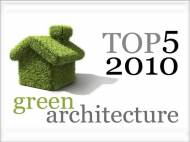 One of the most popular subjects on our website, and a theme that has been covered weekly is green architecture. In this year’s articles about green architecture we covered completed projects which feature both aesthetic and sustainable qualities. We would like to thank to all the architects, builders, and designers who provided us with additional information or material.
One of the most popular subjects on our website, and a theme that has been covered weekly is green architecture. In this year’s articles about green architecture we covered completed projects which feature both aesthetic and sustainable qualities. We would like to thank to all the architects, builders, and designers who provided us with additional information or material.
Here are the 5 most popular articles published in 2010 (according to our visitors):
5. Green architecture – Pacific Crest Timber Frame house
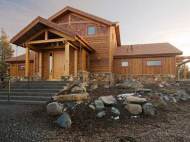 This large, 265 square meters (2,850 square feet) off-grid house is located in Sisters, Oregon. Although its design is looking quite traditional, it was built with a great deal of green features in order to receive the Platinum certification from the Earth Advantage Institute. It was built by Davis Frame Co., a timber frame home company which is based in the New Hampshire.
This large, 265 square meters (2,850 square feet) off-grid house is located in Sisters, Oregon. Although its design is looking quite traditional, it was built with a great deal of green features in order to receive the Platinum certification from the Earth Advantage Institute. It was built by Davis Frame Co., a timber frame home company which is based in the New Hampshire.
Pacific Crest Timber Frame house has three bedrooms and an open layout for the great room, dining room, and kitchen. In addition to passive solar design, solar collectors are used to heat the water or provide heating for the home. Aside other sustainable features, this project is interesting because of the structural insulated panels (SIPs) which were used to build the walls of the house which were complemented by BioBased insulation.
4. Green architecture – Earth House Estate Lättenstrasse
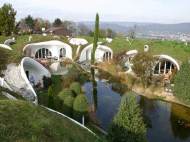 The residential settlement, located at Dietikon, Switzerland, consists of nine houses, three 3 bedroom, a 4 bedroom, a 5 bedroom, three 6 bedroom and a 7 bedroom house. Designed by Vetsch Architektur, Earth House Estate Lättenstrasse is a beautiful example of a small residential settlement which consists of earth houses. The earth-covered houses are grouped centered around a small artificial lake.
The residential settlement, located at Dietikon, Switzerland, consists of nine houses, three 3 bedroom, a 4 bedroom, a 5 bedroom, three 6 bedroom and a 7 bedroom house. Designed by Vetsch Architektur, Earth House Estate Lättenstrasse is a beautiful example of a small residential settlement which consists of earth houses. The earth-covered houses are grouped centered around a small artificial lake.
Earth houses are based on the interpretation of an environmentally conscious, ecological and progressive architecture. Earth houses are designed as integral arches – one of the main reasons this kind of architecture has highly efficient insulation. The reduction of needed heating results in energy savings of up to 50%.
3. Green architecture – Dell Children’s Medical Center
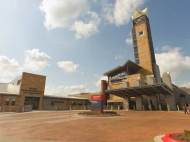 The Dell Children’s Medical Center of Central Texas has been awarded LEED Platinum certification from the U.S. Green Building Council, as the first hospital in the world that achieved such status. Designed by Karlsberger architects, the 43,665 square meters hospital opened in June 2007 on 32 acres which once belonged to the former Mueller Municipal Airport.
The Dell Children’s Medical Center of Central Texas has been awarded LEED Platinum certification from the U.S. Green Building Council, as the first hospital in the world that achieved such status. Designed by Karlsberger architects, the 43,665 square meters hospital opened in June 2007 on 32 acres which once belonged to the former Mueller Municipal Airport.
92 percent of construction waste was reused on site (among other materials, 47,000 tons of Mueller airport runway material was reused for parking lots and garages). About 40% fly ash that was used instead of Portland cement in the concrete mix yields a drop in carbon dioxide emissions equivalent to taking 450 cars off the road. Sustainable and indigenous building materials, as white Texas limestone, recycled glass and rapidly-renewable cork, were used throughout the hospital’s exterior façade, flooring and walls.
2. Green architecture – Hillside House, Marin County, California
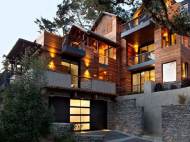 Placed in the hills of Mill Valley, California, this custom home is the first LEED Platinum for Homes certified house in Marin County, and the second LEED Platinum house in Northern California. The house constructed at the 131 Hillside was designed by its owner, Scott Lee, who has incorporated various green building concepts into the entire design from the start to completion.
Placed in the hills of Mill Valley, California, this custom home is the first LEED Platinum for Homes certified house in Marin County, and the second LEED Platinum house in Northern California. The house constructed at the 131 Hillside was designed by its owner, Scott Lee, who has incorporated various green building concepts into the entire design from the start to completion.
It has a very vertical design with living and private zones situated on multiple separate floors. It’s a consequence of a steep hillside site where the house was built. It has numerous outdoor and covered terraces, as well as the balconies which capitalize on stunning views of the bay and the San Francisco skyline beyond.
1. Green architecture – Vancouver Convention and Exhibition Center
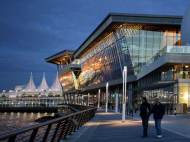 The Vancouver Convention and Exhibition Center (VCECE) expansion was design and development was lead by Seattle based architecture firm LMN architects. Since it was built in harbor, the building’s foundation has a five-tiered artificial reef and 1500 feet of marine habitat that serves as home to barnacles, mussels, seaweed, starfish, crabs and various fish species.
The Vancouver Convention and Exhibition Center (VCECE) expansion was design and development was lead by Seattle based architecture firm LMN architects. Since it was built in harbor, the building’s foundation has a five-tiered artificial reef and 1500 feet of marine habitat that serves as home to barnacles, mussels, seaweed, starfish, crabs and various fish species.
The most extraordinary addition to the center is the 2.4-hectare (5-acre) living roof that is landscaped with more than 400,000 native plants and grasses, and provides a natural habitat to birds, butterflies, insects, small mammals, and bees. These bees (about 240,000 of them) live in four hives that produce honey to be used in the center’s kitchen. The layers of the structure act as an insulator, reducing heat gains in summer and heat losses in winter, as well as contribute to the building’s stormwater utilization.









2011 is all about going green.
I found you through the web design forum dude, check my site for useful information on making your home go green!
Green Energy & EPC Resources
Sam
wow that has to be followed by all the people ion the world ..thank you……